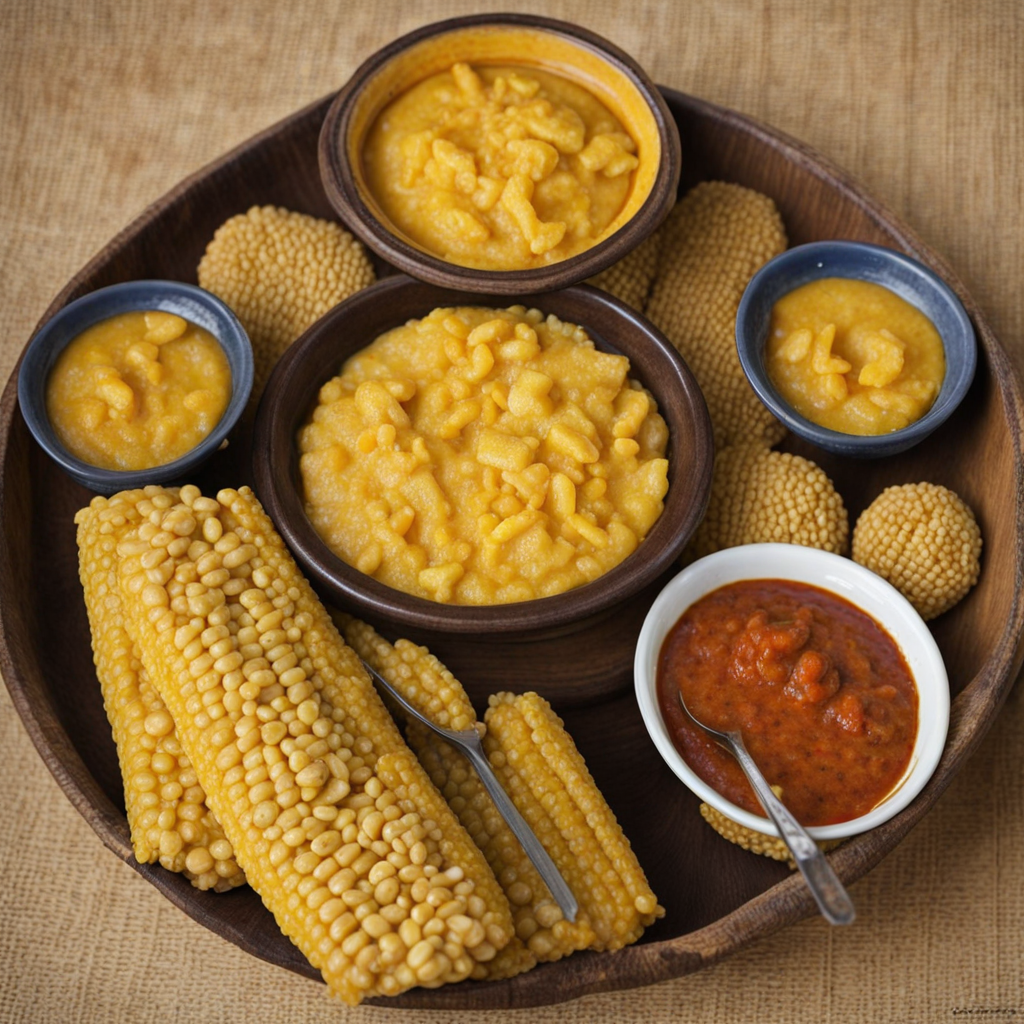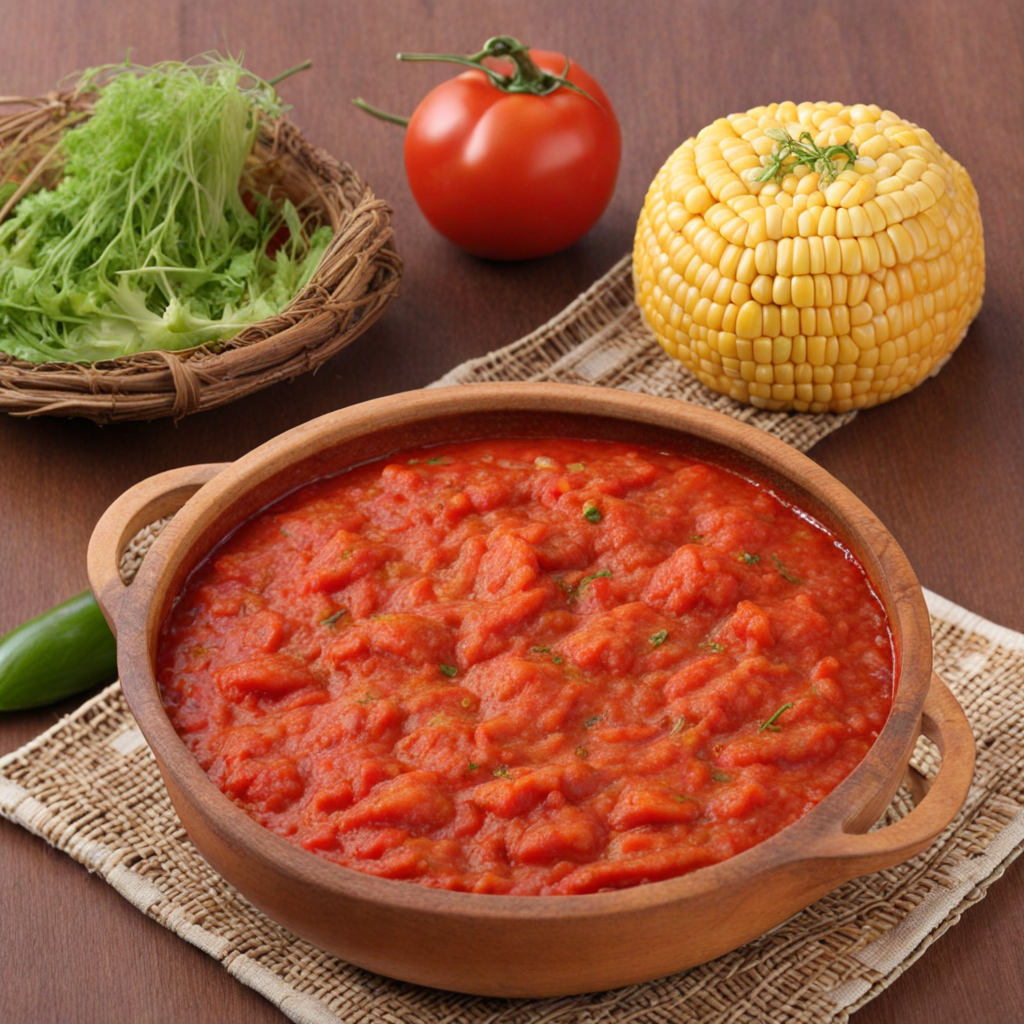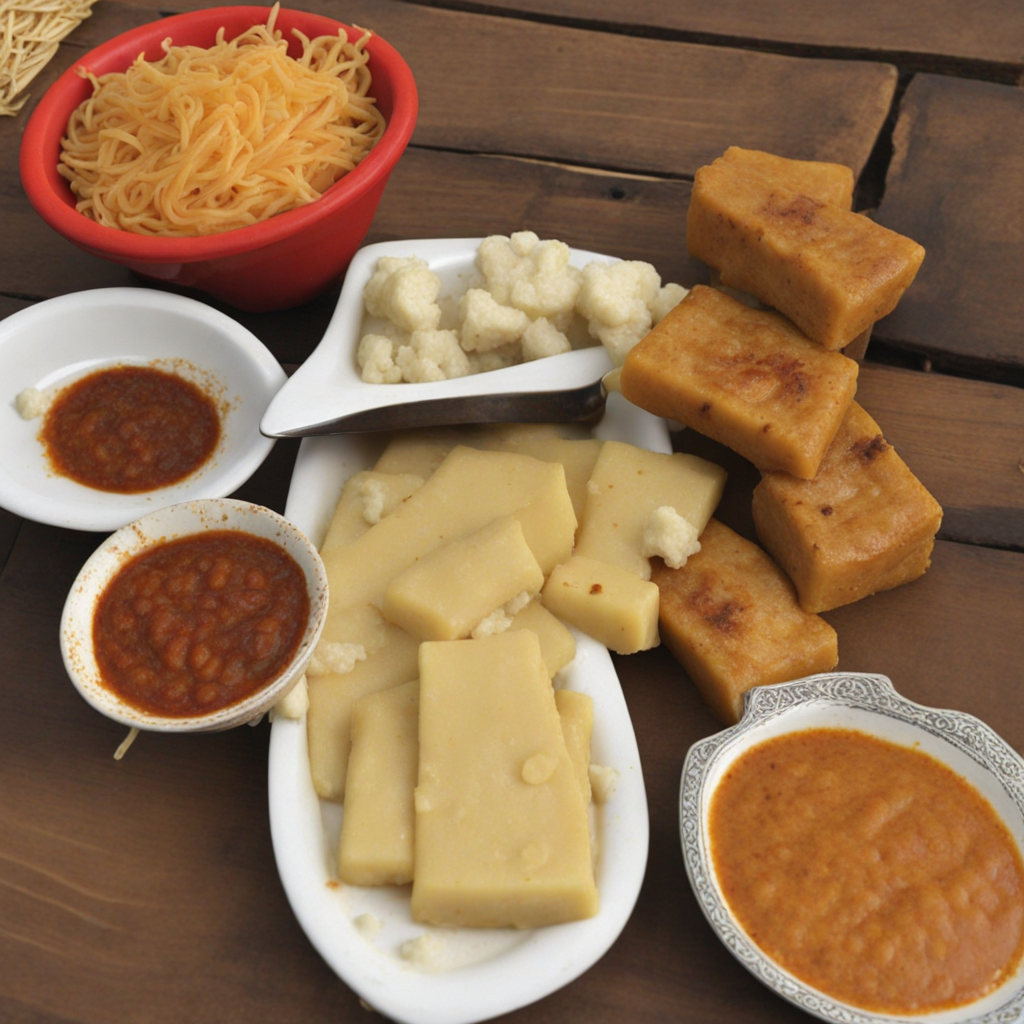Akassa
Akassa is a traditional dish from Benin, characterized by its unique texture and flavor profile. Made primarily from fermented corn, the dish has a slightly tangy taste, which is a result of the fermentation process. The corn is ground into a fine paste and then mixed with water to create a thick batter, which is then allowed to ferment for several hours or overnight. This fermentation not only enhances the flavor but also gives the Akassa its distinctive aroma, making it a beloved staple in many Beninese households. Served warm, Akassa is often enjoyed with a variety of accompaniments that elevate its taste experience. It is commonly paired with spicy sauces, such as the fiery tomato and pepper sauce known as 'sauce gombo' or a rich, flavorful fish sauce. These pairings create a delightful contrast between the mild, slightly sour taste of the Akassa and the bold flavors of the sauces, making each bite a harmonious blend of tastes. Additionally, it can be served alongside fried plantains or grilled fish, further enhancing the culinary experience. What makes Akassa particularly interesting is its versatility and cultural significance. It is not only a common breakfast item but can also be enjoyed as a snack or a main meal throughout the day. The dish is often shared among family and friends during gatherings, symbolizing togetherness and community. For those looking to explore new flavors, Akassa offers a delightful introduction to West African cuisine, showcasing the simple yet profound ways in which fermented ingredients can transform a dish into a flavorful experience.
How It Became This Dish
The History of Akassa: A Culinary Heritage of Benin #### Origins Akassa is a traditional dish native to Benin, a West African country known for its rich tapestry of cultures, languages, and culinary practices. The dish is primarily made from fermented corn or maize, which reflects the agricultural practices of the region. The fermentation process not only enhances the flavor but also serves as a means of preserving the grain, a vital aspect in a country where food security has historically been a concern. The origins of Akassa can be traced back to the indigenous populations of the region, who relied heavily on local grains for sustenance. Archaeological evidence suggests that maize was introduced to West Africa via the Columbian Exchange in the late 15th century, and it quickly became a staple food due to its adaptability to local growing conditions. The indigenous peoples of Benin adapted their culinary practices to incorporate this new ingredient, leading to the birth of Akassa. #### Cultural Significance Akassa is more than just a food item; it is deeply woven into the cultural fabric of Benin. It is often associated with communal gatherings and celebrations, serving as a symbol of hospitality and unity. In many communities, Akassa is prepared during significant life events such as weddings, naming ceremonies, and traditional festivals. Its preparation is often a collective effort, involving multiple family members or community members, which strengthens social bonds and reinforces cultural identity. The dish is typically served alongside a variety of accompaniments, such as spicy sauces, grilled fish, or meat stews. These pairings not only enhance the flavor of Akassa but also reflect the diverse culinary traditions present in Benin. The use of spices and ingredients from various ethnic groups highlights the multicultural nature of Beninese society, where different tribes and communities have influenced one another over centuries. #### Development Over Time Over the years, Akassa has undergone various transformations, influenced by changes in agricultural practices, trade, and globalization. Traditionally, the preparation of Akassa involved a labor-intensive process where corn was soaked, ground, and fermented over several days. This method required skill and patience, as the fermentation process was crucial for developing the dish's distinctive texture and tangy flavor. However, with technological advancements and changing lifestyles, the preparation of Akassa has seen some simplification. The advent of maize processing facilities and ready-to-use flour has made it easier for people to prepare this dish at home or sell it commercially. While some purists may argue that these changes compromise the authenticity of Akassa, many appreciate the convenience offered by modern methods, which cater to the fast-paced lifestyles of urban dwellers. In the context of globalization, Akassa has also found its way onto international menus, serving as an ambassador of Beninese cuisine. This exposure has led to a renewed interest in traditional foods and a growing appreciation for the culinary heritage of Benin. Chefs and food enthusiasts around the world are now exploring Akassa, experimenting with its preparation and presentation, thereby introducing it to new audiences. #### Regional Variations Within Benin, there are regional variations of Akassa that reflect the local ingredients and cultural practices. For instance, in the southern coastal areas, where fishing is prevalent, Akassa may be served with fresh seafood, while in the northern regions, where meat is more common, it might be paired with hearty meat stews. These variations not only highlight the dish's versatility but also underscore the diversity within Beninese cuisine. Moreover, the dish is often adapted to cater to contemporary dietary preferences. With the rise of vegetarianism and veganism, many people have started to experiment with plant-based accompaniments for Akassa, showcasing its adaptability to modern eating habits. This evolution demonstrates how traditional foods can be both preserved and reimagined to meet the changing tastes of a new generation. #### Akassa in Contemporary Society In contemporary Benin, Akassa continues to hold a significant place in the culinary landscape. It is commonly found in street food stalls and local eateries, where it is enjoyed by people from all walks of life. The dish provides a sense of nostalgia for many, evoking memories of family gatherings and festive celebrations. Its affordability and accessibility make it a popular choice among students and workers seeking a quick yet satisfying meal. Furthermore, Akassa has become a source of pride for many Beninese people, symbolizing their rich cultural heritage. Efforts are underway to promote traditional foods like Akassa through culinary festivals and cultural events, aiming to educate both locals and tourists about the importance of preserving culinary traditions. Such initiatives not only celebrate the dish but also raise awareness about the agricultural practices and local ingredients that contribute to its unique flavor profile. #### Conclusion The history of Akassa is a testament to the resilience and adaptability of Beninese culinary traditions. From its origins as a simple fermented maize dish to its current status as a beloved staple, Akassa reflects the rich cultural heritage of Benin. It serves as a reminder of the importance of community, tradition, and the connection between food and identity. As global interest in traditional cuisines continues to grow, Akassa stands poised to take its place on the world stage, representing the vibrancy and diversity of Beninese culture. Whether enjoyed at a family gathering, a street food stall, or a fine dining restaurant, Akassa will undoubtedly continue to be a cherished part of Benin’s culinary landscape for generations to come.
You may like
Discover local flavors from Benin







